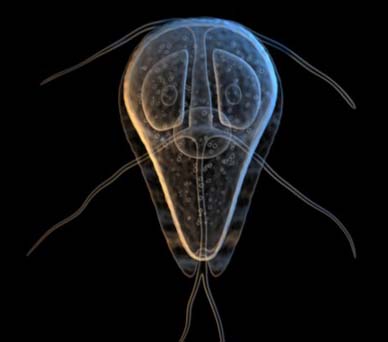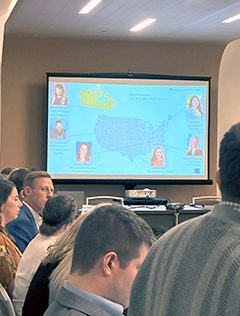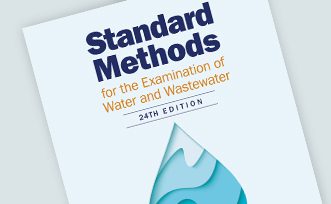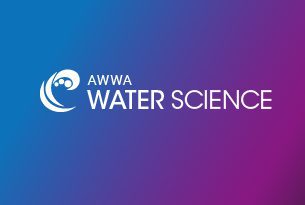Waterborne Pathogens


Waterborne Pathogens
A goal of drinking water and wastewater treatment is to reduce the numbers of viable organisms to acceptable levels, and to remove or inactivate all pathogens capable of causing human disease. Despite the remarkable success of water treatment and sanitation programs in improving public health, sporadic cases and point-source outbreaks of waterborne diseases continue to occur. Waterborne pathogens include the microorganisms Giardia, Cryptosporidium and Legionella.
Waterborne Pathogens
Maintaining a Numeric Minimum Disinfectant Residual in the Distribution System
This Framework provides a structured approach for water systems to determine both immediate and long-term strategies for achieving and maintaining a numeric minimum secondary disinfection residual throughout the distribution system. Recognizing that each distribution system is unique and multiple factors may contribute to low or absent secondary disinfectant residuals, the Framework does not prescribe a single solution. Instead, it guides users through the steps, considerations and decision points for evaluating and selecting the most appropriate combination of strategies for their particular circumstances.
Legionella pneumophila
Legionella is currently the leading cause of U.S. waterborne disease outbreaks but is still believed to be under-reported. Legionella is different from typical waterborne pathogens in that the route of exposure is inhalation rather than ingestion.
The National Academy of Sciences convened an expert committee to review the state of the science related to the management of Legionella in water systems, formulate recommendations to improve management of Legionella contamination of water systems, and consequently better control Legionnaires’ disease in the United States. The report was completed in August 2019 and is entitled Management of Legionella in Water Systems. In conjunction with this report, NAS also released interactive science-based guidance for facility managers.
U.S. Centers for Disease Control recently distributed a new Legionella guide
Developing a Water Management Program to Reduce Legionella Growth & Spread in Buildings features a checklist to help building owners and managers identify where Legionella could grow and spread in a building and ways to reduce the risk of contamination. Information on how events outside of buildings can lead to Legionella growth, such as construction, water main breaks and changes to municipal water quality is also included. AWWA recommends that utilities familiarize themselves with the guide and share it with relevant customers.
AWWA Guidance on Building Return to Service — A Framework for Building Managers
Responding to Water Stagnation in Buildings with reduced or No Water Use: A Framework for Building Managers provides a decision-making framework for building managers to design responses to building water system stagnation.
This document provides information to address the immediate need to respond to stagnation. Building managers then can update or create water management programs. Second, this document provides some “how-to” resources for building managers assessing their building plumbing systems after/during stagnation and deciding what level of actions are needed.
Technical Resources
Reports
Manuals
M7 Problem Organisms in Water Identification and Treatment
This operations manual describes nonpathogenic organisms in source water, the various problems they can cause in water treatment, and treatment strategies.
Get the Manual
M48 Waterborne Pathogens
This manual describes waterborne viral, bacterial, and parasitic pathogens, and water treatment options.
Get the Manual
M68 Water Quality in Distribution Systems
This manual will help drinking water utilities and professionals understand the factors that affect water quality, ways to address them and best practices for optimizing distribution system water quality.
Get the Manual

Advertisement
Events With a Focus on Waterborne Pathogens
See All Events
Water Quality Technology Conference
Discover the latest science, research, and engineering and solutions to fight drinking water contamination.
November 15-19, 2026
Memphis, TN
Annual Conference & Expo
Join water heroes at one of the largest and most important global water gatherings.
June 21-24, 2026
Washington, D.C.
External Resources
CDC Toolkit for Controlling Legionella in Common Sources of Exposure (Legionella Control Toolkit)
CDC Drinking Water Facts and Stats
CDC Drinking Water Advisory Communication Toolbox
CDC Toolkit: Developing a Water Management Program to Reduce Legionella Growth and Spread in Buildings
CDC Disinfection of Hot Tubs Contaminated with Legionella
USEPA Drinking Water Criteria Document for Legionella
USEPA Legionella: Drinking Water Fact Sheet

AWWA Policy Statements
AWWA’s policy statements are brief statements on protecting and improving water supply, water quality, management, and the interests of the public and the environment. They are written by consensus, subject to review and comment by AWWA committees, councils, and members. Because they represent AWWA’s position on these matters, they are approved by the AWWA Executive Committee of the board of directors.


Technical Committee Engagement
AWWA members are recognized globally for their industry expertise and their generosity in sharing that expertise for a better world through better water. AWWA members participate in committee activities, developing conference programs, writing technical manuals, developing standards, creating educational content and contributing to AWWA publications. Committee members primarily interact through conference calls, emails, and face to face meetings at conferences and events.
Organisms in Water Committee
Microbiological Contaminants Research Committee
Disinfection Committee
Advertisement



